2.1 Introducing tides
2.1.1 The moon
The principal cause of tides is the gravitational pull of the moon on the earth’s seas. The gravitational force exerted by the moon reduces with increasing distance. So, the seawater nearest the moon is pulled towards the moon more strongly than the earth, resulting in a high tide. On the opposite side of the earth, the seawater is attracted towards the moon less strongly than the earth, resulting in another high water. Low water occurs at the midpoints.
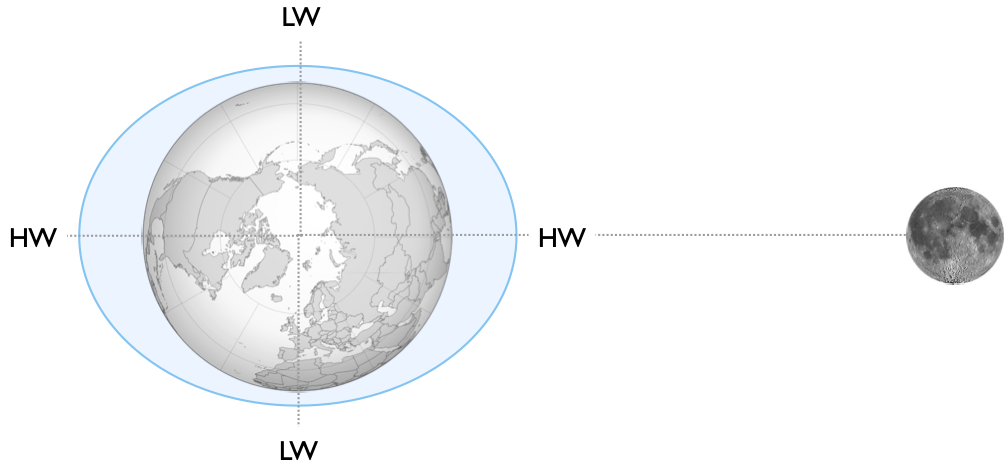
The earth rotates relative to the moon, causing the water level at each point on its surface to rise and fall.
In practice, this picture is highly simplified – the land disrupts this model of a perfect water-covered sphere. The reason we get two (often large) tides a day in the UK is to a large extent due to resonant effects in the Atlantic ocean and the concentration of tides due to the shape of the land. However, let us return to our simple water-covered sphere model….
The earth rotates once every 24 hours. So, every 24 hours, a point on the earth should see 2 high waters and 2 low waters.
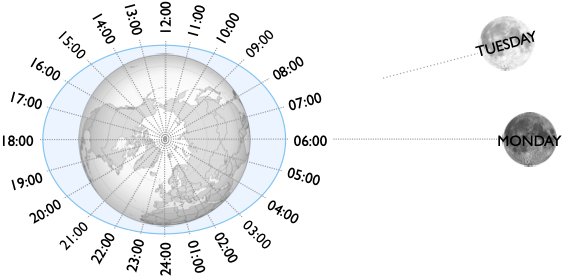
The moon orbits the earth on an approximately monthly cycle. So, once the earth has completed a full revolution, the moon will have moved a little. This has the effect of making high water occur about one hour later each day. The curve below shows typical tidal cycles over 2 days. Note that there are two high tides and two low tides each day. High water is around an hour later on the second day.
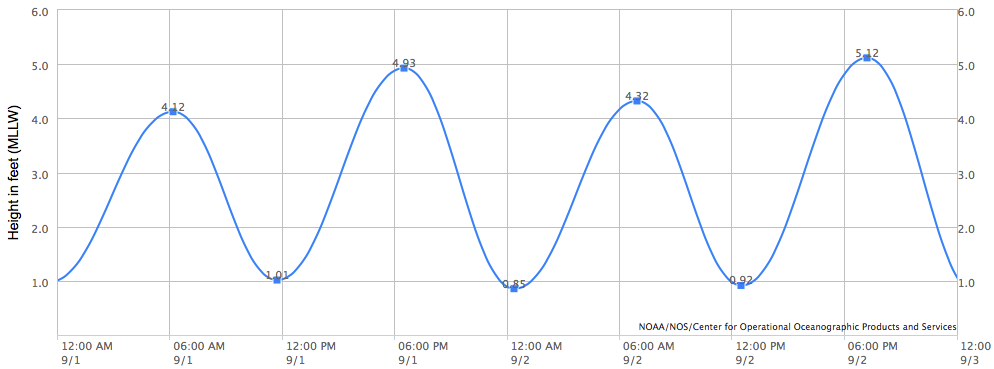
2.1.2 The Sun - neaps and springs
The sun is much further from the earth than the moon, but also much bigger. The net result is that it has a less significant, but still important, effect on the tides. When the sun and moon are in line, tides will rise higher and drop lower than if the sun and moon act perpendicular to each other.
The large tides caused by the combined pull of sun and moon are known as spring tides. The smaller tides caused by them pulling out of line are called neap tides. Note that spring tides are nothing to do with the seasons. They occur roughly every two weeks throughout the year.
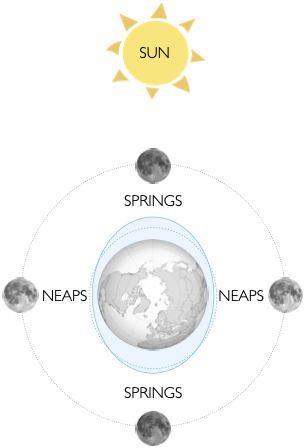
Tidal range is defined as the difference in the height of water between successive high and low waters. During a spring tide, the tidal range will be around twice that of a neap tide.
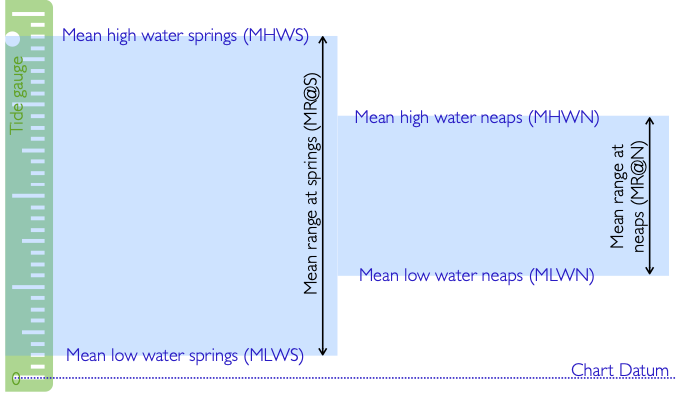
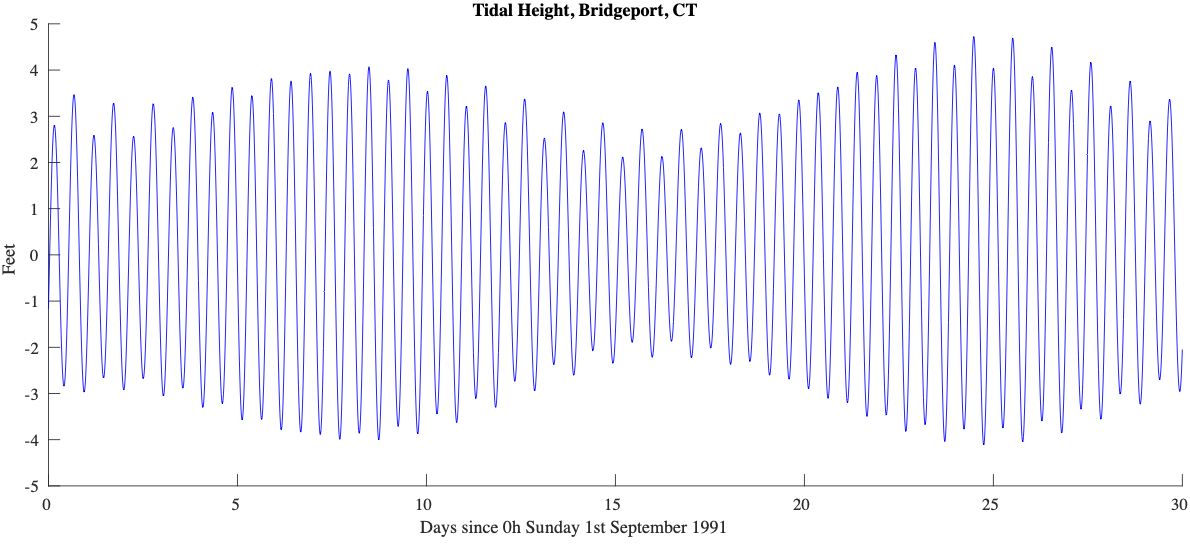
There are also variations in the tidal range over the course of a year. In the UK, we often experience larger tidal ranges around the spring and autumn equinoxes.
In practice, there are many other factors affecting the tides, making predicting times of high and low water a specialized science. The tide is modeled as a combination of sine waves, each with it’s own size and timing (phase). These have names like ‘M2’ - M2 is the twice daily effect of the moon that we described as the main cause of tides above. Of course, as the earth rotates the direction of the sun’s gravity changes on a daily basis, leading to a coefficient called ‘S2’. As the M2 and S2 waves drift in and out of phase, we see the emergence of neap and spring tides.
In addition to the two effects described above, around 35 other ‘tidal constituents’ would need to be considered for even a simple forecast. These relate to effects like:
The elliptical (not perfectly circular) orbit of the moon (N2)
The fact that the moon is not directly above the equator, and that this declination varies through its orbit (K1 and O1)
The tilt of the earth relative to the sun, leading to seasonal variations in the tide (Sa, Ssa)
The effects of shallow water on the movement of the tide (M4, M6, M8, S4)
Collection of data over extended time periods has made the prediction of the tide extremely accurate well into the future (i.e. years ahead) at important locations like major ports.
2.1.3 Meteorological effects
Not all tidal effects are driven by the sun and moon. The weather may have an effect too:
The height of the tide is affected by air pressure - a phenomenon known as the “inverted barometer effect”. Water levels are higher when air pressure is low and lower when air pressure is high. As a rule of thumb, the change is water level is around 1 cm per 1 hPa / 1 milibar pressure. The sea responds to atmospheric pressure over a large area, so changes in sea level due to air pressure rarely exceed 30 cm.
A strong onshore wind will tend to pile up water at the coastline, resulting in increased water levels - this effect is called ‘wind setup’. An offshore wind will do the opposite. Winds blowing along the coast may raise the sea level at high tide and depress it at low tide, increasing the tidal range. Winds blowing in one direction may also increase the length of time that a tidal stream flows in that direction.
Strong low pressure systems often bring strong westerly winds to the British Isles. As a result, the inverted barometer effect and wind setup often occur together. The resulting elevated sea level is called a ‘storm surge’.